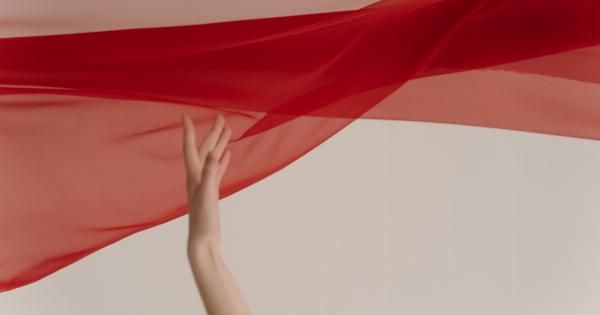Headaches are a common discomfort that many people struggle with on a regular basis. While there can be various causes for headaches, one often overlooked culprit might be your pillow.
Yes, you read that right! Your pillow could potentially be the reason behind those persistent headaches that you just can’t seem to shake off. In this article, we will explore the relationship between pillows and headaches, and how choosing the right pillow can make a world of difference in alleviating your pain.
The importance of a good pillow
Getting a good night’s sleep is essential for overall health and well-being. Your pillow plays a crucial role in ensuring you get the quality rest your body needs.
A proper pillow supports your head, neck, and spine, allowing them to align correctly and maintain a neutral position. However, when your pillow fails to provide adequate support or is simply not suitable for your unique needs, it can result in discomfort and headaches.
Common pillow-related headache triggers
1. Poor neck support: If your pillow does not adequately support your neck, it can lead to tension and strain in the muscles, causing headaches.
2. Incorrect pillow height: Using a pillow that is too high or too low for your sleeping position can lead to misalignment of the neck and spine, putting undue pressure on the muscles and nerves, resulting in headaches.
3. Allergens and irritants: Pillows that are not clean or harbor allergens like dust mites can trigger allergies and sinus congestion, subsequently leading to headaches.
4. Pillow material: Some people may be sensitive or allergic to certain pillow materials, such as feathers or synthetic fibers. These allergies can manifest as headaches.
5. Pillow age and quality: Over time, pillows lose their shape and support, and low-quality pillows may not provide adequate cushioning. Using old or poor-quality pillows can contribute to headaches.
Signs that your pillow may be causing your headaches
1. Morning headaches: Waking up with a headache is a common sign that your pillow might be to blame. If your headache tends to disappear or lessen throughout the day, there’s a good chance it’s related to your pillow.
2. Neck pain and stiffness: If you experience neck pain or stiffness upon waking, it could be an indication that your pillow is not providing the appropriate support, leading to muscle tension and headaches.
3. Allergy symptoms: If you frequently wake up with a stuffy or runny nose, itchy eyes, or sneezing, it is possible that your pillow is harboring allergens, contributing to sinus congestion and subsequent headaches.
4. Decreased sleep quality: Tossing and turning throughout the night due to discomfort caused by an inadequate pillow can result in poor sleep quality, leaving you prone to headaches the next day.
Choosing the right pillow
Now that you are aware of the potential connection between your pillow and headaches, it’s time to explore how to choose the right pillow for your needs. Here are some factors to consider:.
1. Pillow height and firmness
The ideal pillow height and firmness vary depending on your sleeping position. Back sleepers generally benefit from medium-firm pillows with moderate thickness.
Side sleepers require thicker pillows to maintain proper neck alignment, while stomach sleepers need softer and flatter pillows to prevent strain on the neck.
2. Pillow material
Pillow materials range from memory foam and latex to feathers and down, each with its own pros and cons. Consider your allergies, comfort preferences, and any sensitivities when selecting the material for your pillow.
3. Allergen-resistant pillows
If you suffer from allergies, opt for pillows specifically designed to be allergen-resistant. These pillows have hypoallergenic covers and materials that prevent dust mites, pollen, and other allergens from accumulating in the pillow.
4. Pillow replacement
Regularly replacing your pillow is crucial for maintaining its supportive qualities. As a general rule, pillows should be replaced every 1 to 2 years, depending on the quality and signs of wear and tear.
Other tips for headache management
While choosing the right pillow can significantly reduce headaches, here are a few additional tips for managing and preventing them:.
1. Maintain a regular sleep schedule
Establishing a consistent bedtime routine and ensuring you get an adequate amount of sleep can help minimize the frequency and intensity of headaches.
2. Practice good sleep hygiene
Avoiding screens before bed, keeping your bedroom dark and cool, and creating a comfortable sleep environment can contribute to better sleep and fewer headaches.
3. Stay hydrated
Dehydration can often lead to headaches. Ensure you drink enough water throughout the day to prevent dehydration-related headaches.
4. Manage stress
Practicing stress management techniques like deep breathing, meditation, or engaging in relaxing activities can help reduce the frequency of stress-related headaches.
Conclusion
While headaches can have various causes, it is essential not to overlook the impact your pillow can have on your overall well-being.
Choosing the right pillow that provides adequate support, aligns your neck and spine correctly, and avoids allergens can significantly reduce the occurrence of headaches. Additionally, incorporating good sleep habits and stress management techniques into your routine can further contribute to headache prevention.
Take the time to evaluate your pillow and make necessary changes to improve your sleep quality and overall health.
























